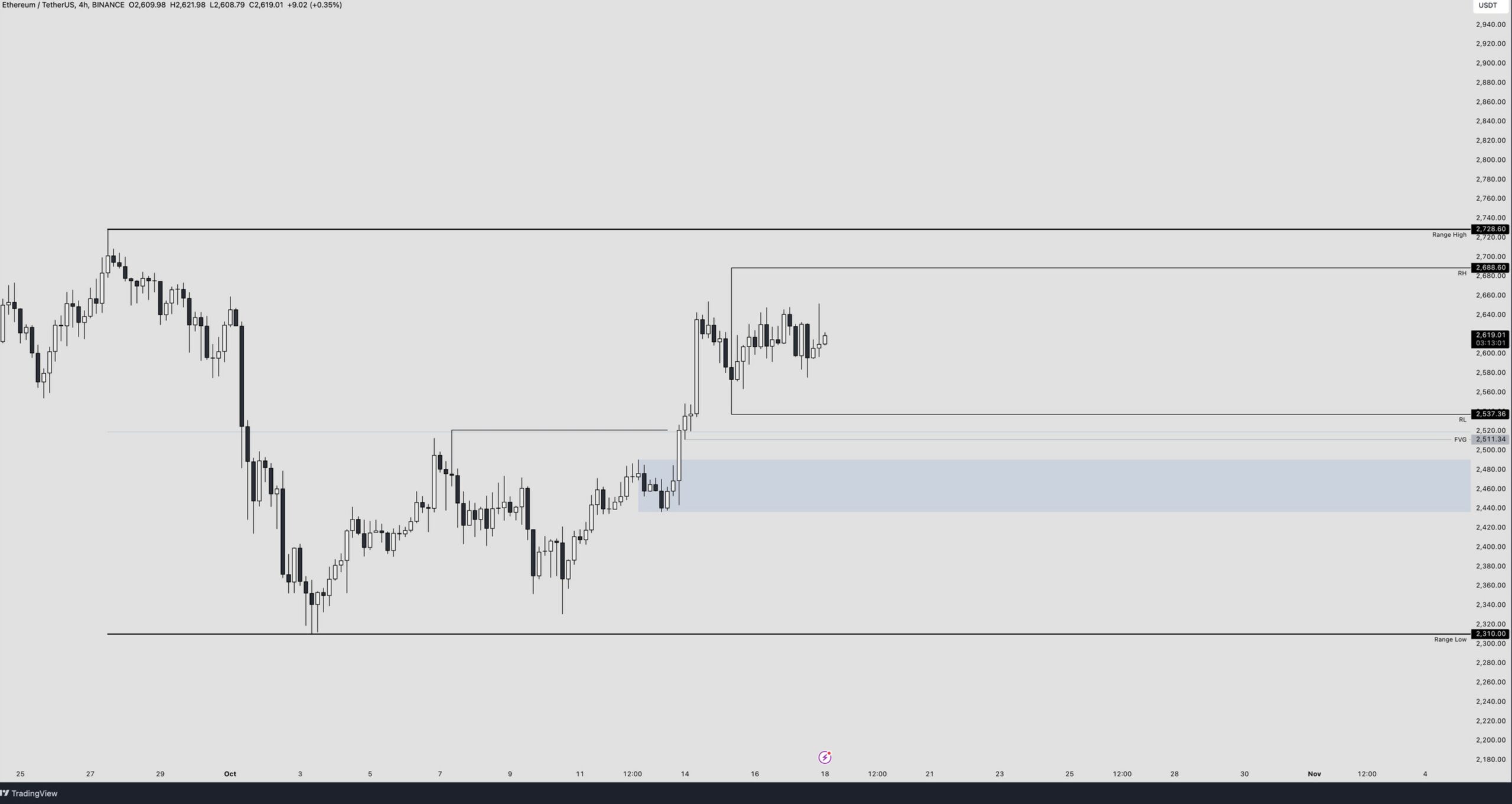- Ethereum may become deflationary again next year.
- ETH/BTC has experienced some fluctuations.
The supply of ether [ETH] has been growing steadily over the past six months by approximately 60,000 ETH per month. However, after the recent 50 basis point rate cut, this growth has slowed significantly to between 30,000 and 40,000 ETH per month.
If this trend continues, Ethereum’s supply could become deflationary again in early 2025, before it even reaches pre-merger levels. If further rate cuts are expected, inflation could fall further, paving the way for future price growth.
Ethereum’s supply plays a crucial role in market dynamics. Since the rate cut, ETH inflation has fallen, suggesting that supply could reach pre-merger levels by 2025.


Source:
This transition to deflation could increase demand for ETH, especially as monetary policy continues to evolve.
As interest rates drop, more users and investors may turn to Ethereum’s network, increasing overall demand and potentially pushing up the price.
The reduced supply combined with stable or rising demand could support a bullish outlook for Ethereum in the long term.
In addition to supply changes, weekly active addresses on Ethereum’s Layer 2 networks are skyrocketing.
Currently, these active addresses have reached approximately 9.65 million, with forecasts suggesting this number could multiply by 10 in the coming years as Web3 adoption grows.


Source: growthepie.xyz
This increase in activity on Layer 2 networks reflects the increasing demand for faster and cheaper transactions on Ethereum, allowing the network to scale without compromising decentralization.
Higher user activity typically correlates with higher transaction fees, further reducing the total ETH supply through burning mechanisms such as EIP-1559.
Impact on ETH price
The impact of these developments on the price of ETH is significant. The current lower inflation rate, combined with increased activity on Layer 2s, strengthens the long-term price outlook for Ethereum.
If the deflationary trend continues into 2025, it could lead to higher ETH prices, especially as supply decreases while demand remains high.
A run on the range low in the FVG and possible demand, for longs. Conversely, a sweep at range high leads to shorts, but a close above the range would mean no trade.
Meanwhile, ETH/BTC has experienced some fluctuations. Ethereum has lagged Bitcoin in recent months, and many analysts believe ETH/BTC could head lower in the near term.


Source: TradingView
The pair is currently trading in the range of 0.03-0.04, and a bottom may form at 0.038 or even 0.036. Some even consider 0.03 to be the worst-case scenario, although it is unlikely to get that low.
Read Ethereum [ETH] Price forecast 2024-2025
However, while ETH/BTC may remain weak until late 2024, the long-term outlook for ETH/USD is stronger, with a recovery expected to occur in 2025.
Despite the short-term weakness of the ETH/BTC pair, ETH’s fundamentals suggest its price could surge higher in 2025, making it a solid long-term bet for investors.

